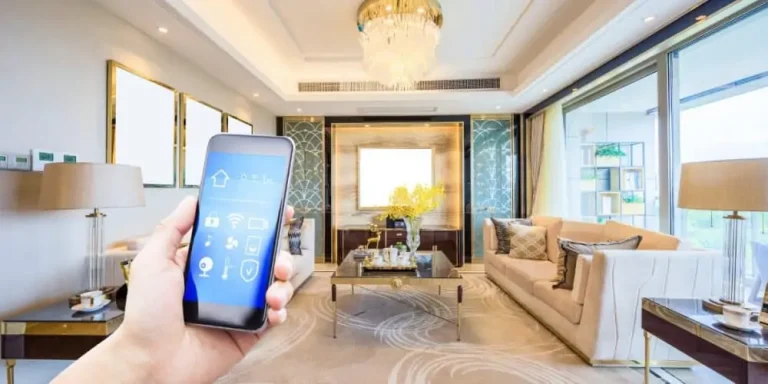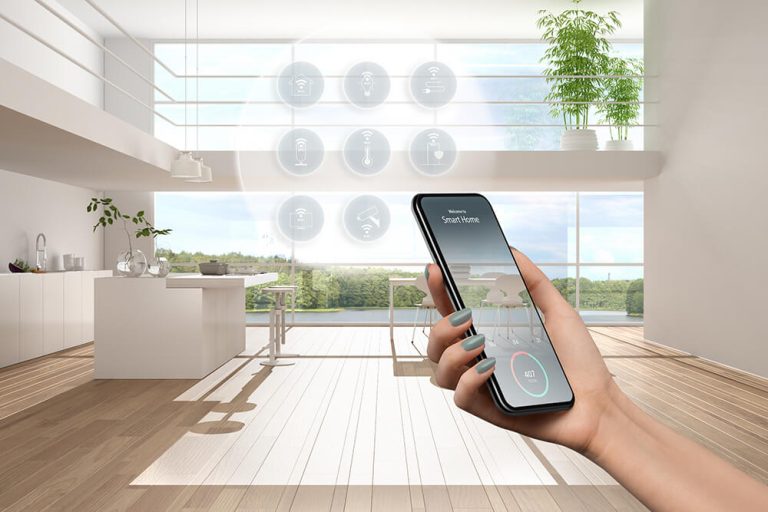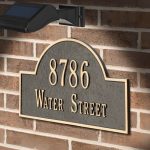In the age of smart homes, technology has granted us the power to manage nearly every aspect of our living environments with the tap of a finger or the sound of a voice. Among the most sought-after features are those that either enhance energy efficiency or bolster security. With an increasing array of smart devices designed to optimize energy consumption and safeguard our homes, the decision between prioritizing one over the other becomes a compelling dilemma for many homeowners. Is it wiser to invest in energy-saving devices to reduce utility costs, or should one focus on security features to ensure peace of mind? Both are essential, but which offers the most tangible benefits, and how can you strike the right balance?
In this article, we will explore the pros and cons of focusing on energy efficiency versus security within the smart home ecosystem. By the end, you’ll have a clearer understanding of which direction may work best for your needs and how to incorporate both elements in a way that creates an optimal living environment.
Energy Efficiency: The Appeal of Saving Costs
Energy efficiency is one of the most compelling reasons to adopt smart home technology. With the ever-increasing cost of energy, reducing consumption is not only financially savvy but also environmentally responsible. Smart devices that optimize energy use can have a significant impact on both your utility bills and your carbon footprint. Let’s delve into some of the most popular energy-efficient technologies available and why they might be the right choice for your home.
1. Smart Thermostats
Among the most popular energy-saving devices in a smart home is the smart thermostat. Unlike traditional thermostats, which require manual adjustments and tend to operate on fixed schedules, smart thermostats like the Nest Learning Thermostat or Ecobee automatically adapt to your living patterns. These devices learn when you are home or away and adjust heating and cooling systems accordingly, avoiding unnecessary energy consumption.
For instance, if you’re away for the day, a smart thermostat can raise or lower the temperature to conserve energy, ensuring you’re not heating or cooling an empty house. Additionally, many smart thermostats can be controlled remotely via smartphone apps, allowing you to adjust your home’s temperature before you arrive.
The financial benefits of smart thermostats are significant, as studies have shown that they can save homeowners as much as 10–15% on heating and cooling bills annually. Given that heating and cooling typically account for a large portion of energy consumption in most homes, these devices can yield a high return on investment over time.
2. Smart Lighting
Another crucial component of a smart home that improves energy efficiency is smart lighting. Traditional lighting systems often result in wasted energy, especially if lights are left on in rooms that aren’t being used. With smart bulbs, you can program your lights to turn on and off at scheduled times, or even adjust brightness levels based on natural light availability.
Brands like Philips Hue and LIFX offer a range of smart bulbs that can be controlled through apps or integrated with voice assistants like Amazon Alexa or Google Assistant. These bulbs also offer the advantage of being energy-efficient LED lights, which consume less power than conventional incandescent bulbs. Moreover, with smart lighting, you can set the ambiance for your home—whether you want to brighten a room during the day or dim it for a movie night.
3. Smart Plugs and Appliances
Smart plugs are an excellent way to control the energy consumption of non-smart appliances. By plugging a device into a smart outlet, you can schedule it to turn off automatically when not in use, preventing unnecessary energy drain from standby mode. This is particularly useful for appliances like coffee makers, televisions, and kitchen gadgets that often consume energy when idle.
In addition to smart plugs, many modern appliances, such as refrigerators, washing machines, and dishwashers, now come with smart capabilities that optimize energy usage. Some models can even be scheduled to run during off-peak hours when electricity costs are lower, further enhancing their cost-saving potential.
Security: The Peace of Mind Factor
On the other side of the spectrum lies security—an equally crucial element of the modern smart home. With increasing concerns about burglaries, home invasions, and even package theft, many homeowners prioritize smart security systems to keep their homes safe. The convenience of monitoring one’s home remotely and receiving instant alerts in case of suspicious activity has made smart security devices a must-have for many.
1. Smart Security Cameras
Smart cameras are one of the cornerstones of modern home security. These devices provide real-time video footage of your home’s exterior and interior, which can be accessed remotely via an app. Popular brands like Ring, Arlo, and Nest offer cameras with features like motion detection, night vision, and two-way audio, allowing you to not only monitor your property but also interact with visitors or potential intruders.
A major advantage of these cameras is their ability to integrate with other smart home devices. For example, you can set up notifications to alert you when motion is detected or program the lights to automatically turn on when the camera senses movement, providing a deterrent to potential intruders. Some systems even have facial recognition technology, which can help differentiate between familiar faces and strangers, adding an extra layer of protection.
2. Smart Doorbells
Smart doorbells, such as Ring and Nest Hello, have revolutionized the way homeowners interact with visitors. These devices are equipped with cameras and microphones, enabling you to see and communicate with anyone who approaches your door, whether you’re at home or away. In addition to providing an added layer of convenience (say goodbye to missed deliveries), smart doorbells act as a deterrent to burglars, who may be hesitant to approach a house with a visible security camera.
Most smart doorbells also allow homeowners to remotely unlock or lock the door, so you can grant access to guests, service workers, or delivery personnel with a simple tap on your phone.
3. Smart Locks and Alarms
Smart locks are another essential component of a comprehensive home security system. These locks can be operated remotely, allowing you to lock or unlock doors via a smartphone app, voice command, or even automatically based on your proximity. Popular smart lock brands, like August and Schlage, offer the ability to create virtual keys for family members, guests, or service providers.
In addition to locks, smart alarm systems can integrate with cameras, sensors, and motion detectors to alert you of potential breaches. Some smart alarm systems, like SimpliSafe or ADT, offer 24/7 professional monitoring, ensuring that you have support in case of emergencies.
Finding the Right Balance: Energy vs. Security
When it comes to deciding whether to prioritize energy efficiency or security in your smart home, it’s essential to consider your lifestyle, goals, and budget. If reducing energy costs and environmental impact is your primary concern, smart thermostats, lighting, and appliances may be the ideal place to start. These devices offer long-term savings and make your home more sustainable, all while improving comfort.
On the other hand, if the safety and security of your family and property are your top priorities, investing in smart security systems is a wise choice. With devices like security cameras, smart locks, and alarm systems, you can keep your home protected and monitor it remotely, offering peace of mind whether you’re at home or traveling.
In reality, the best smart home is one that incorporates both energy-efficient and security-enhancing technologies. Many of the devices in these categories complement each other. For example, a smart thermostat can be integrated with motion sensors to adjust the temperature only when someone is in the room, saving energy while enhancing comfort. Similarly, security cameras and smart locks can be tied into lighting systems to create the illusion of an occupied home, deterring burglars while saving energy by turning off lights when not needed.
Conclusion
The debate between prioritizing energy efficiency or security in a smart home ultimately boils down to personal preference and individual circumstances. While energy-saving devices help reduce costs and environmental impact, security devices offer invaluable protection and peace of mind. For most homeowners, the solution lies in striking a harmonious balance between the two, ensuring that both energy management and safety are optimized. With the wealth of smart technologies available today, creating a home that is both energy-efficient and secure has never been easier. The key is to start with the features that matter most to you and expand from there, building a smart home that suits your unique needs.















